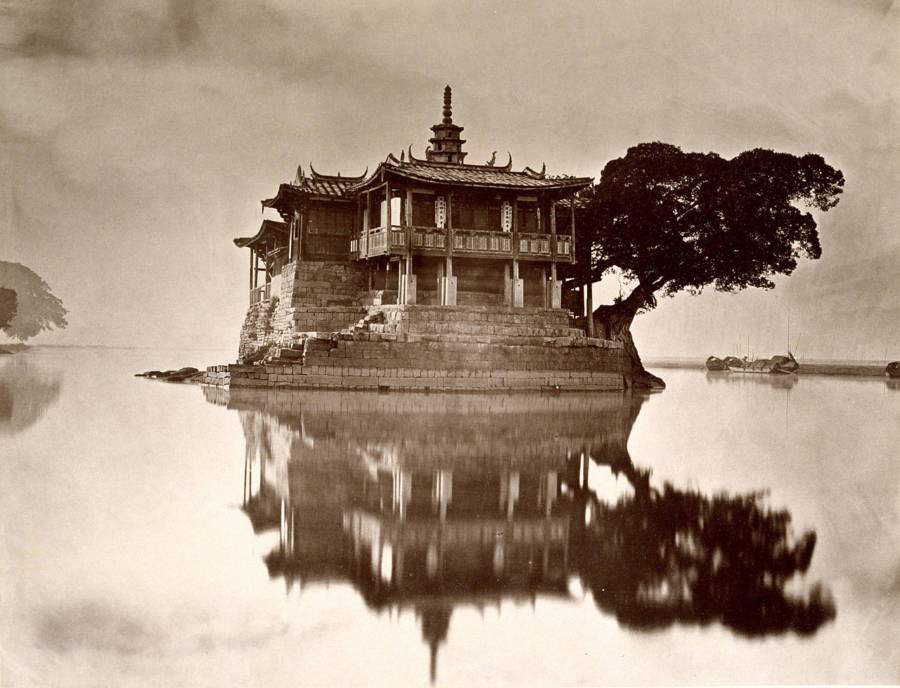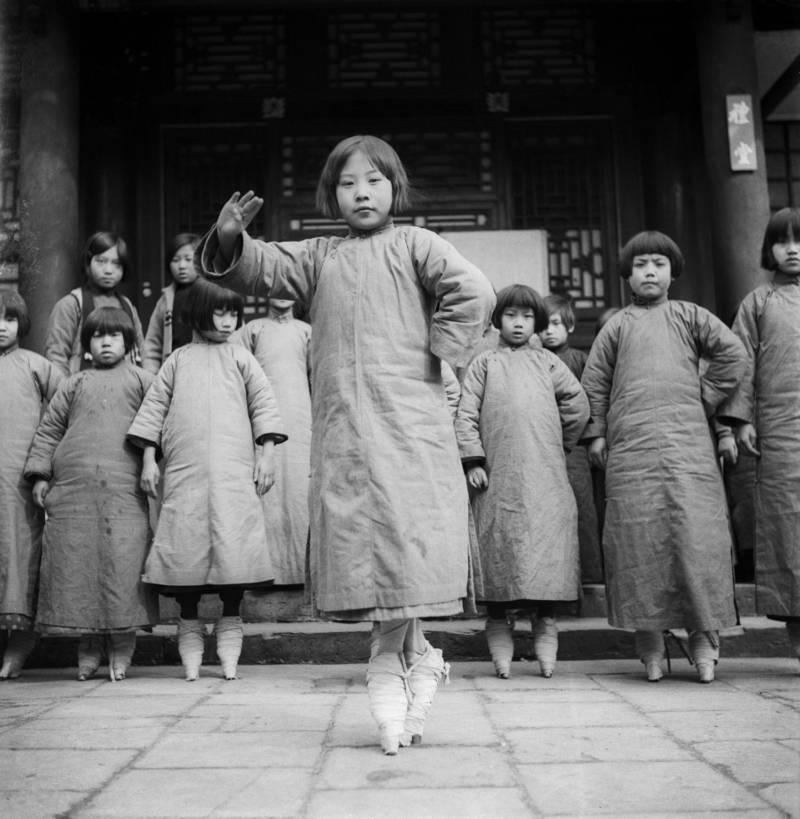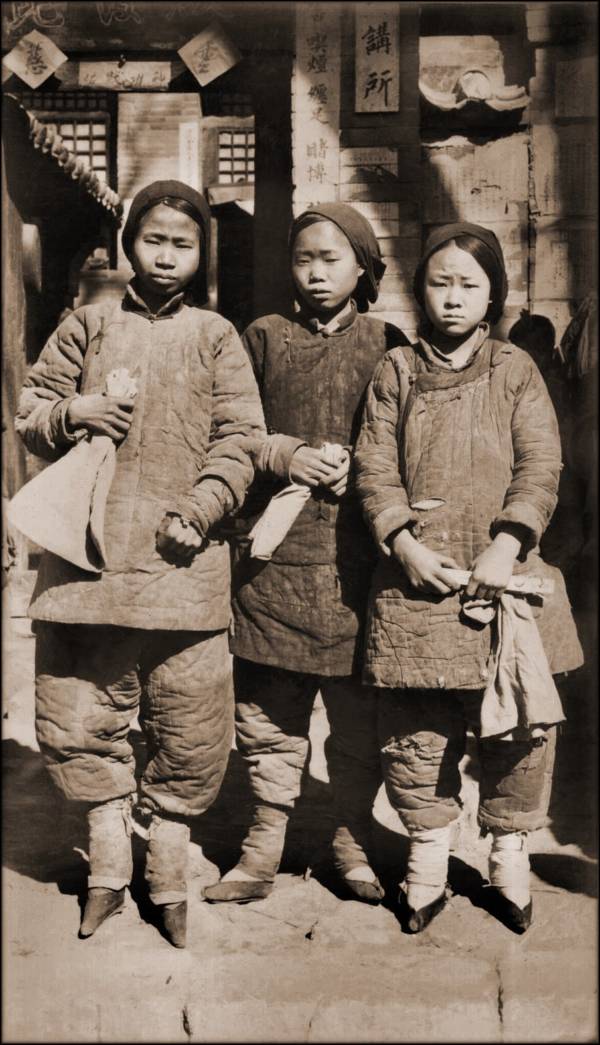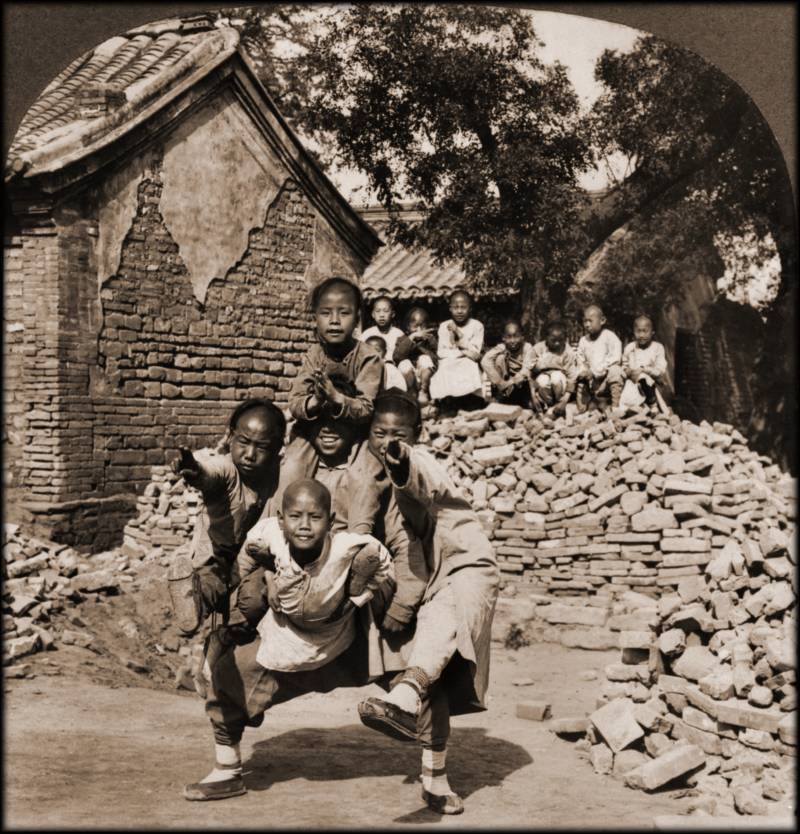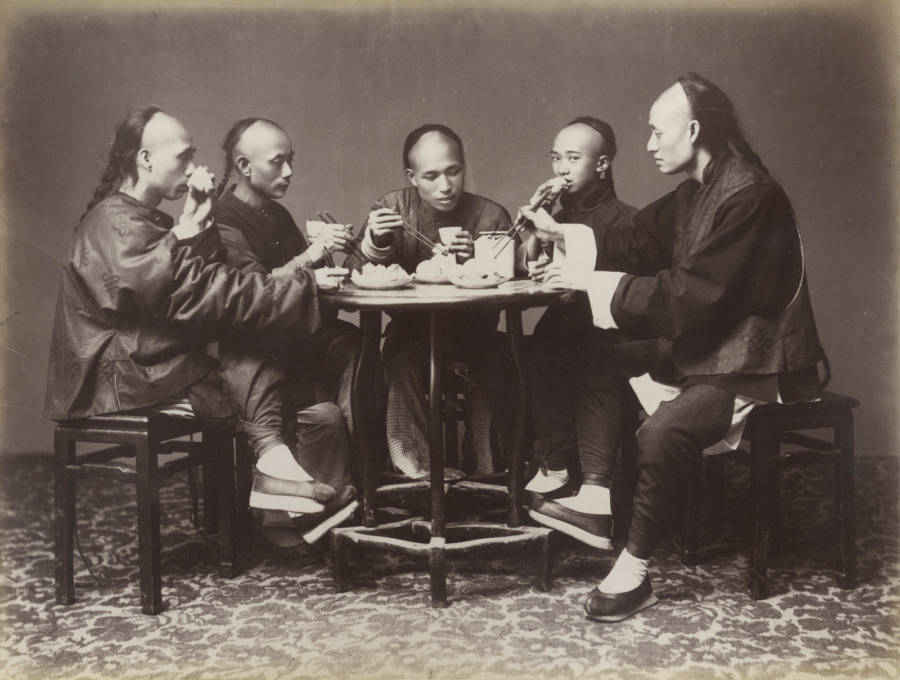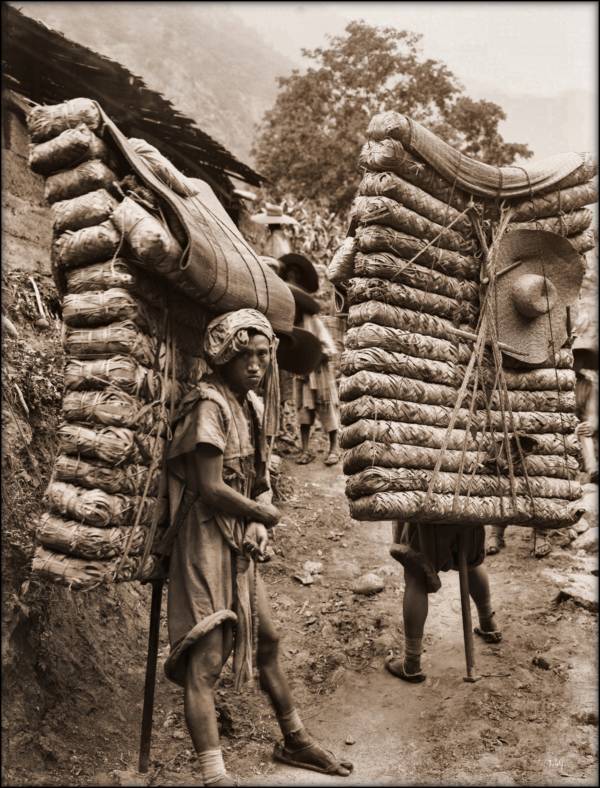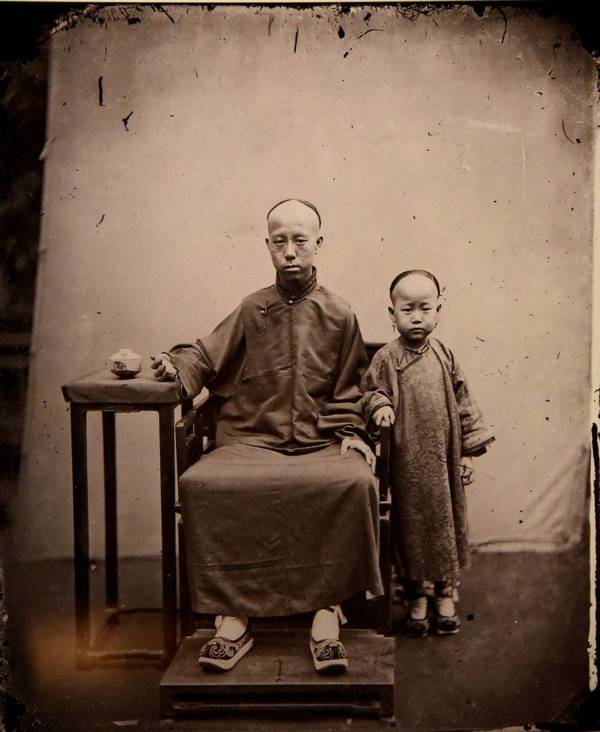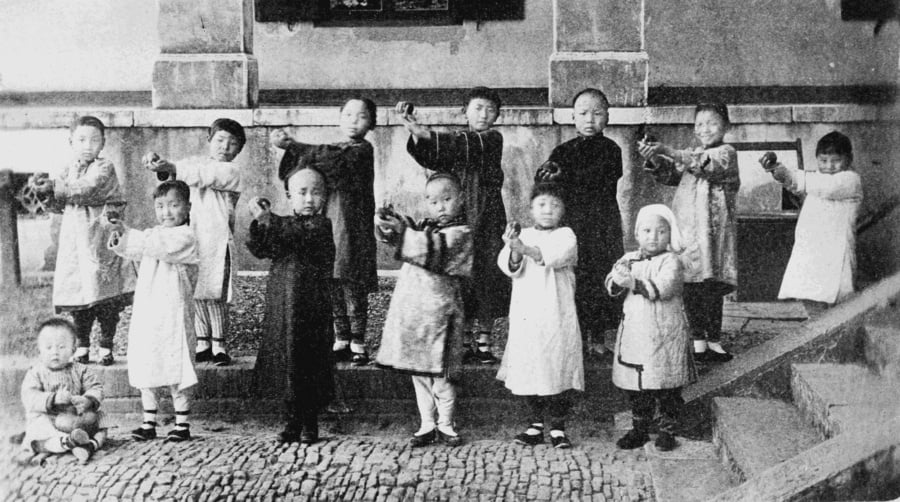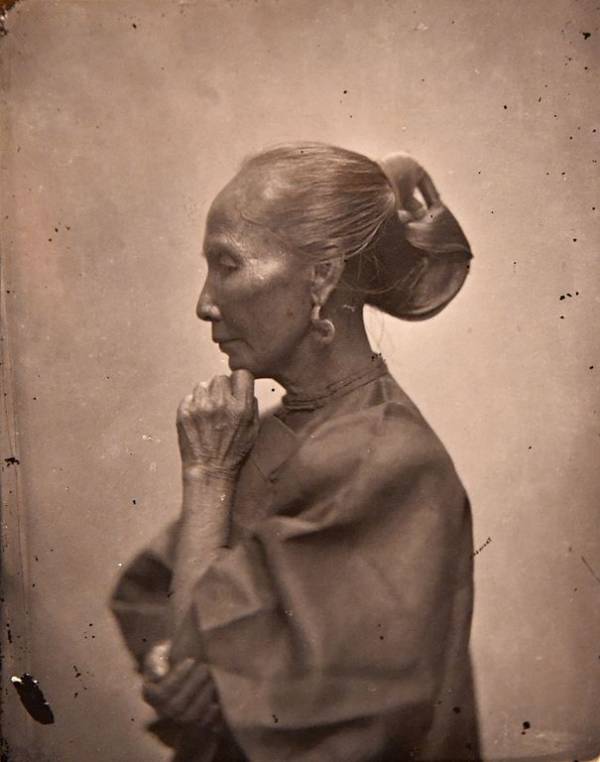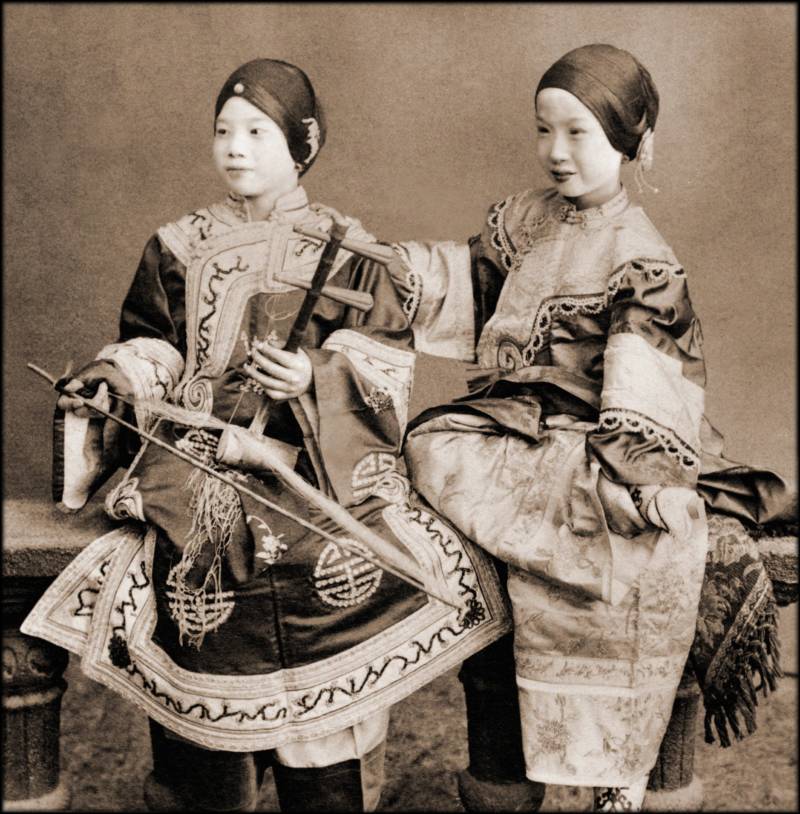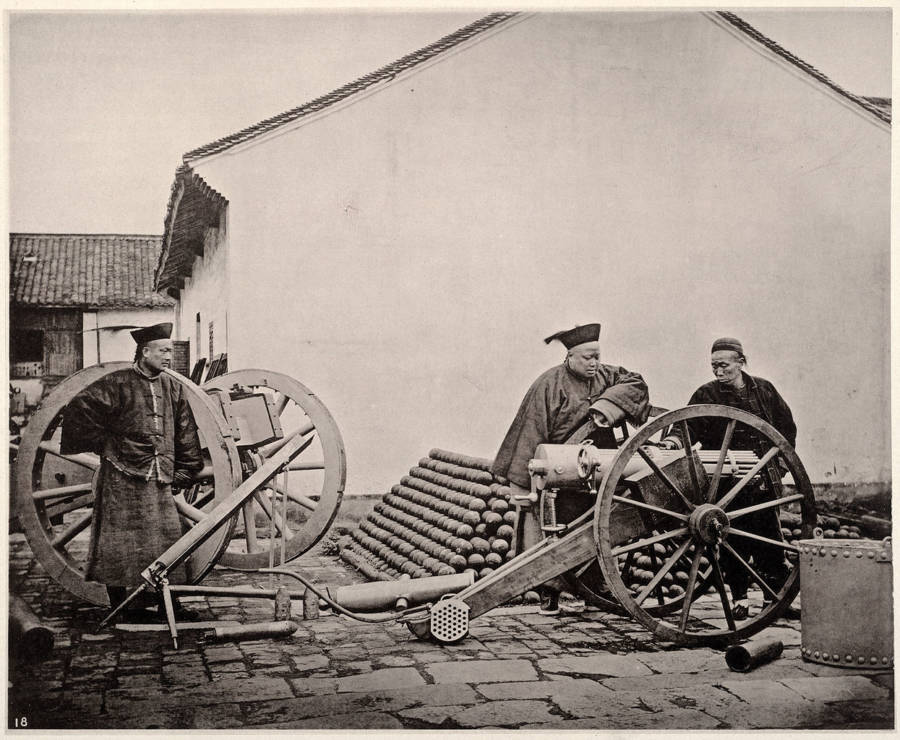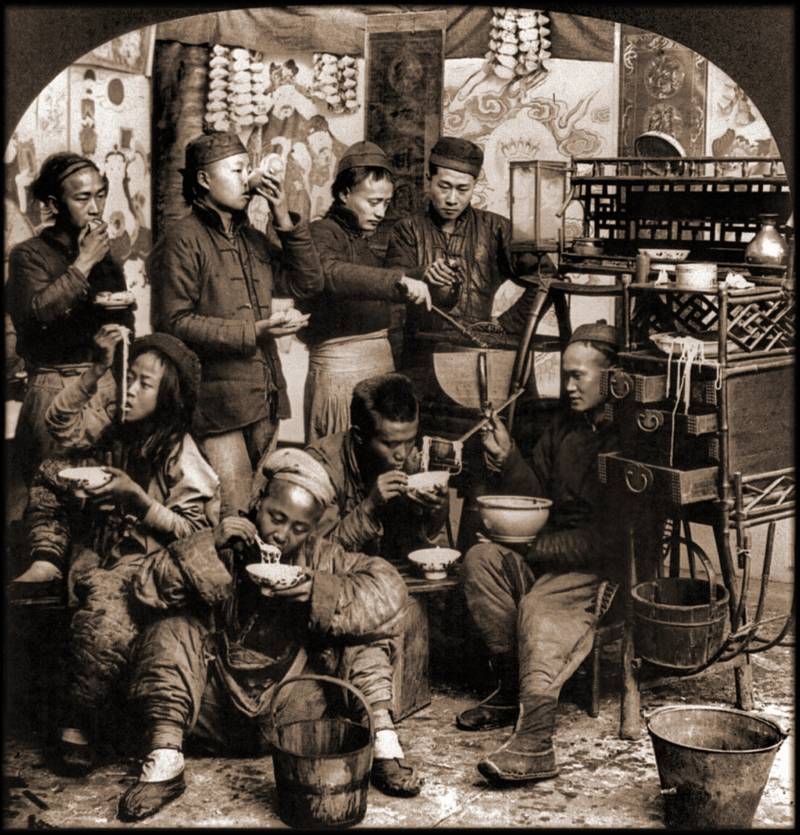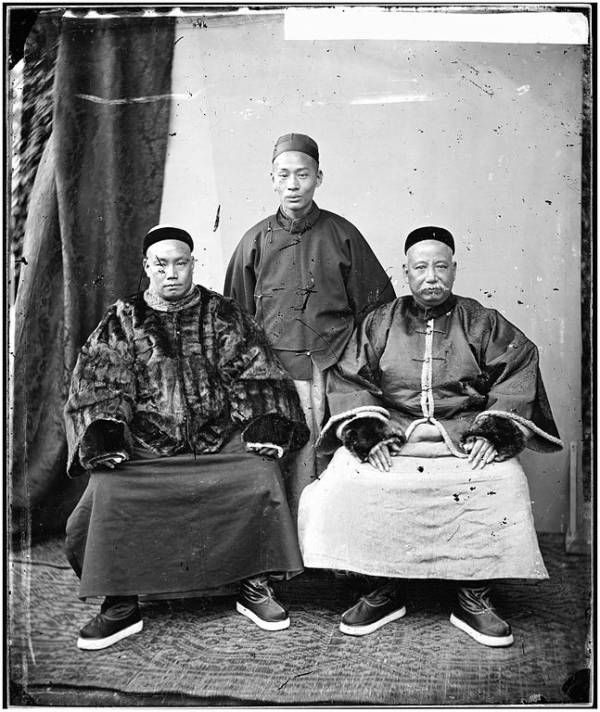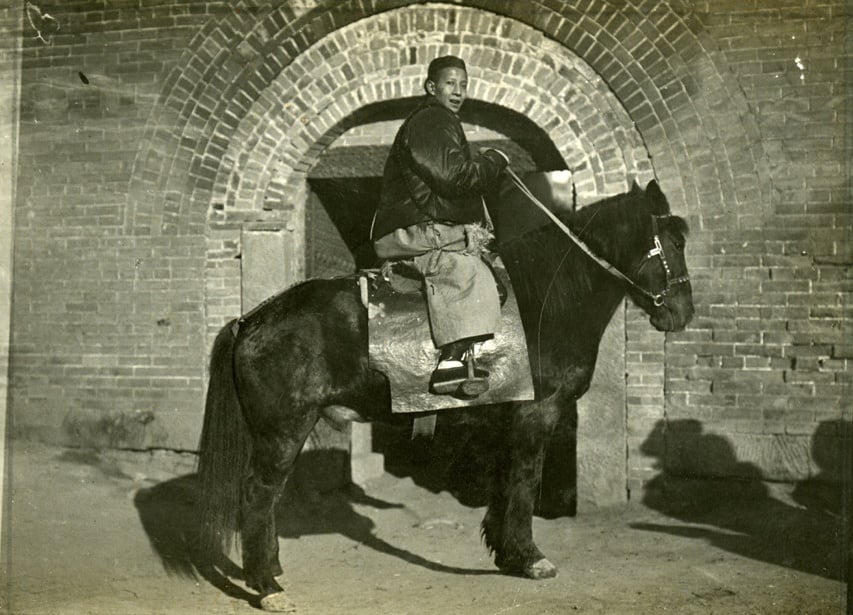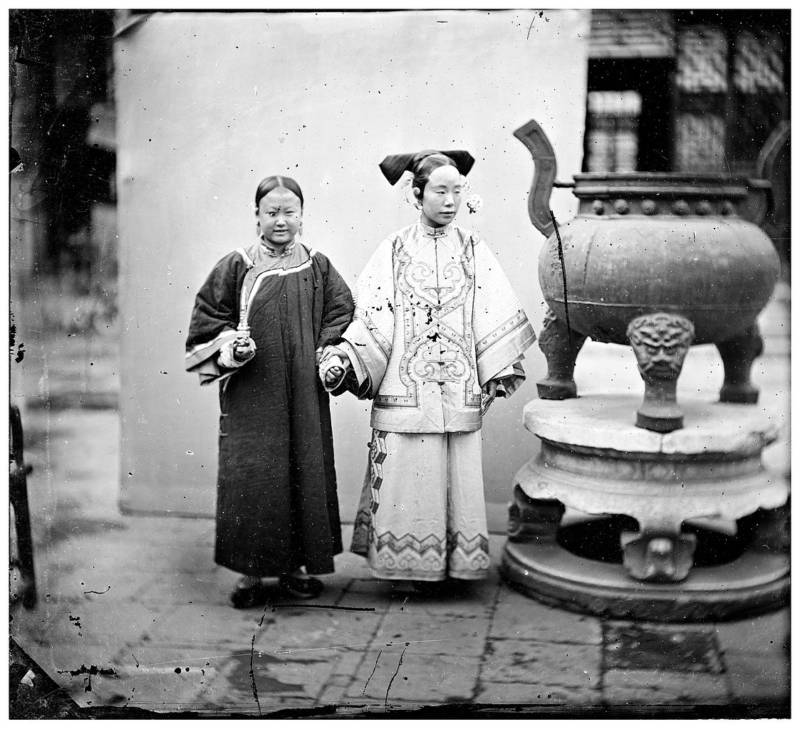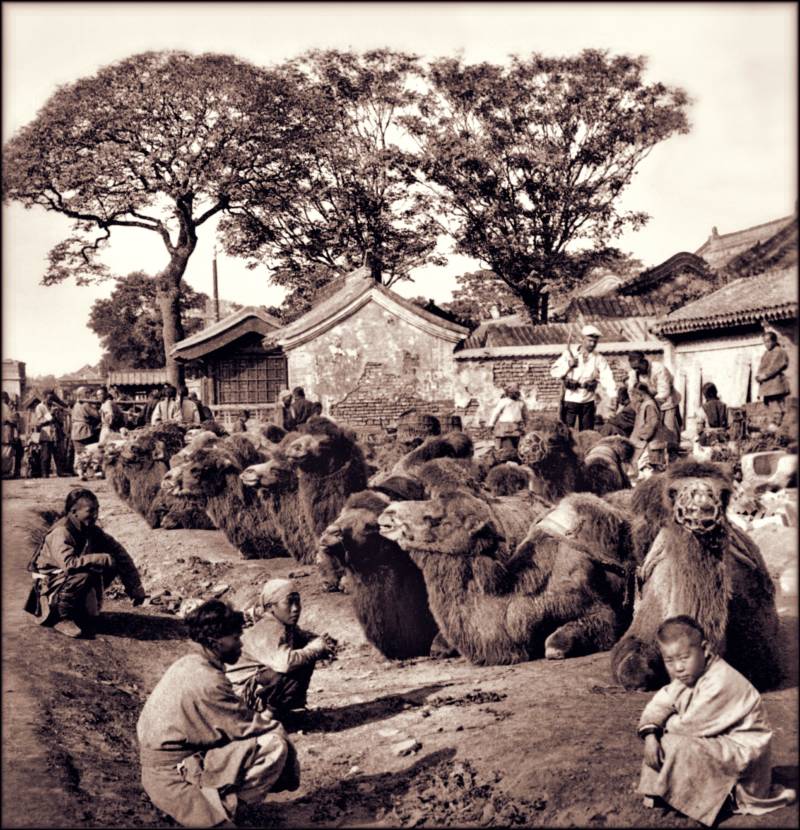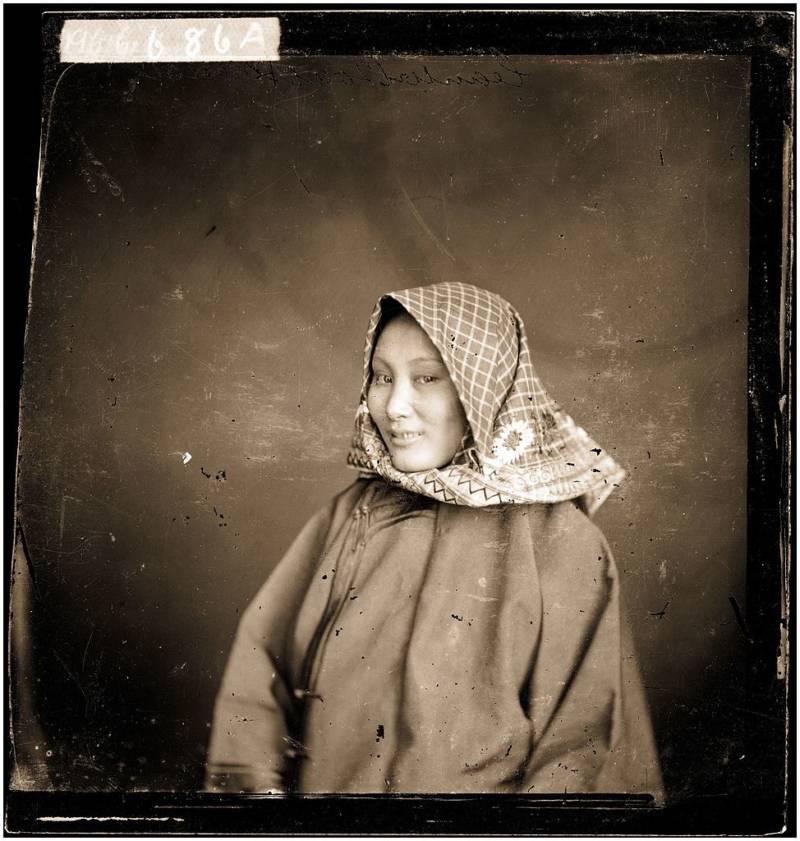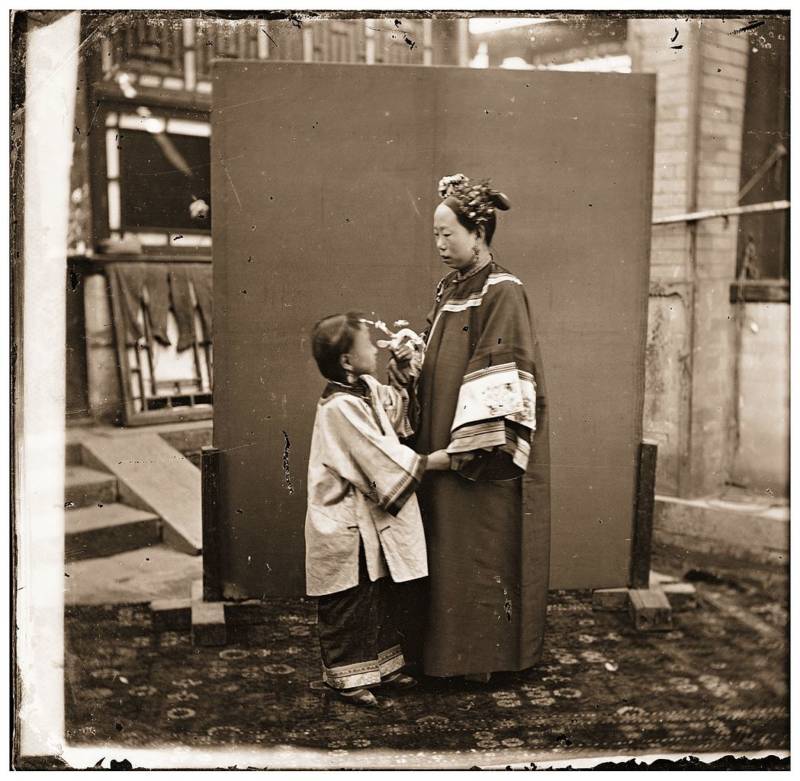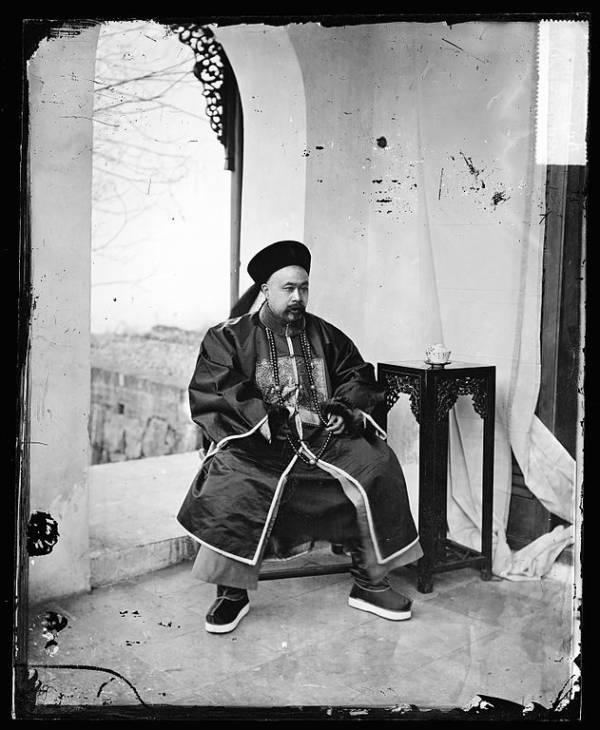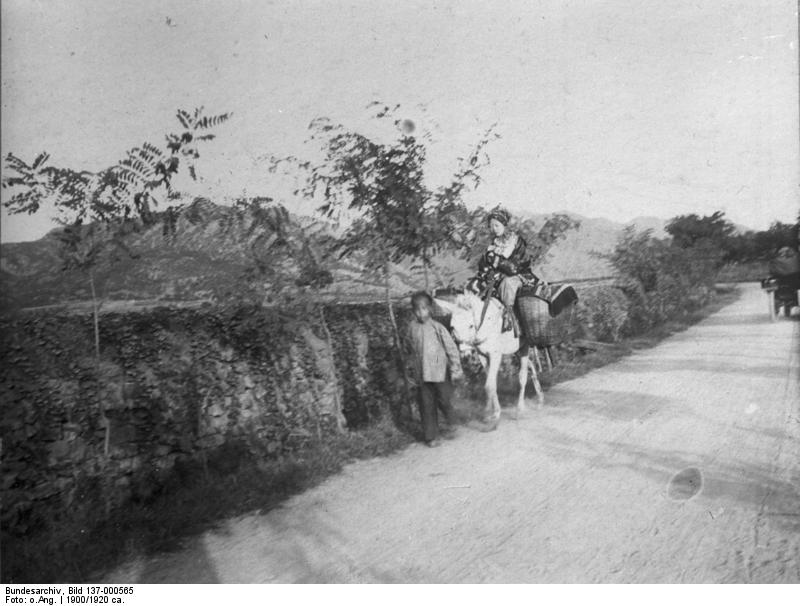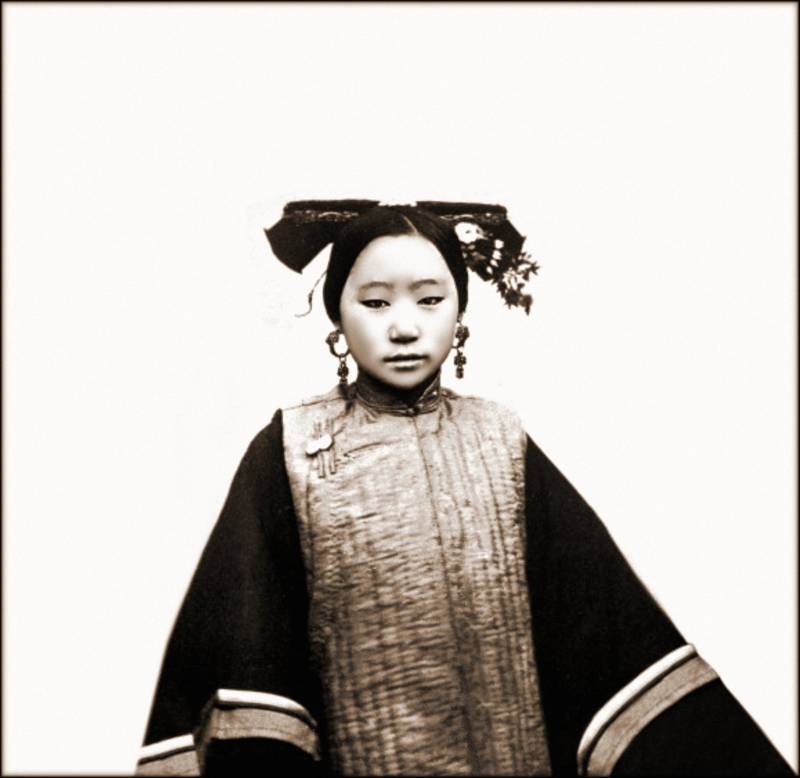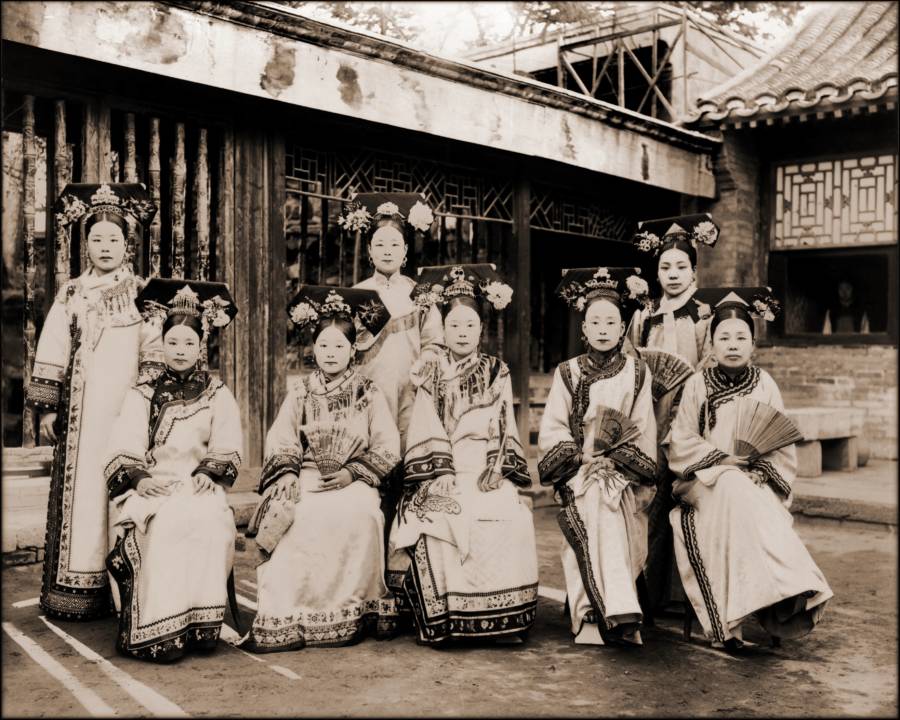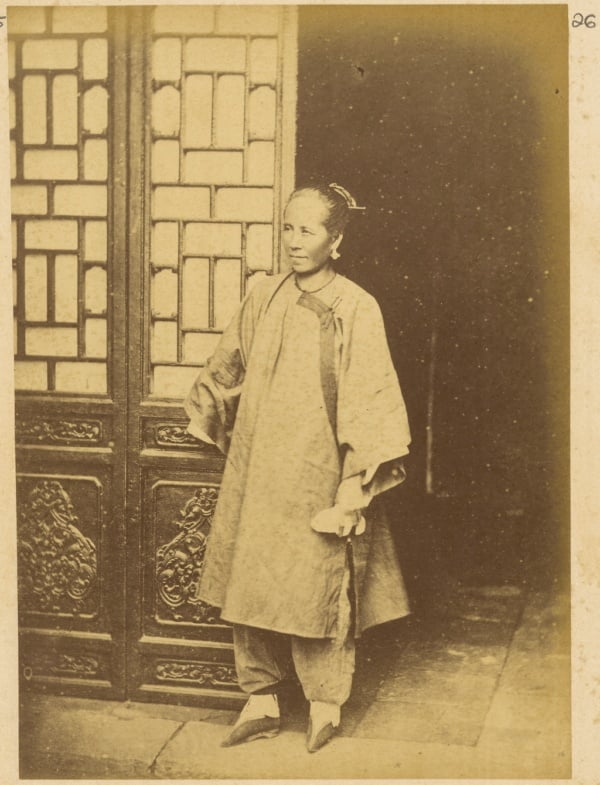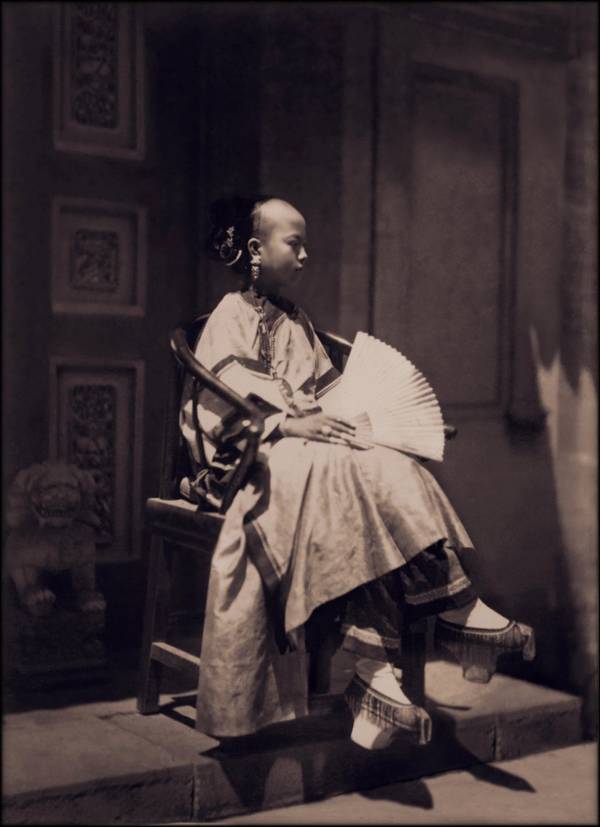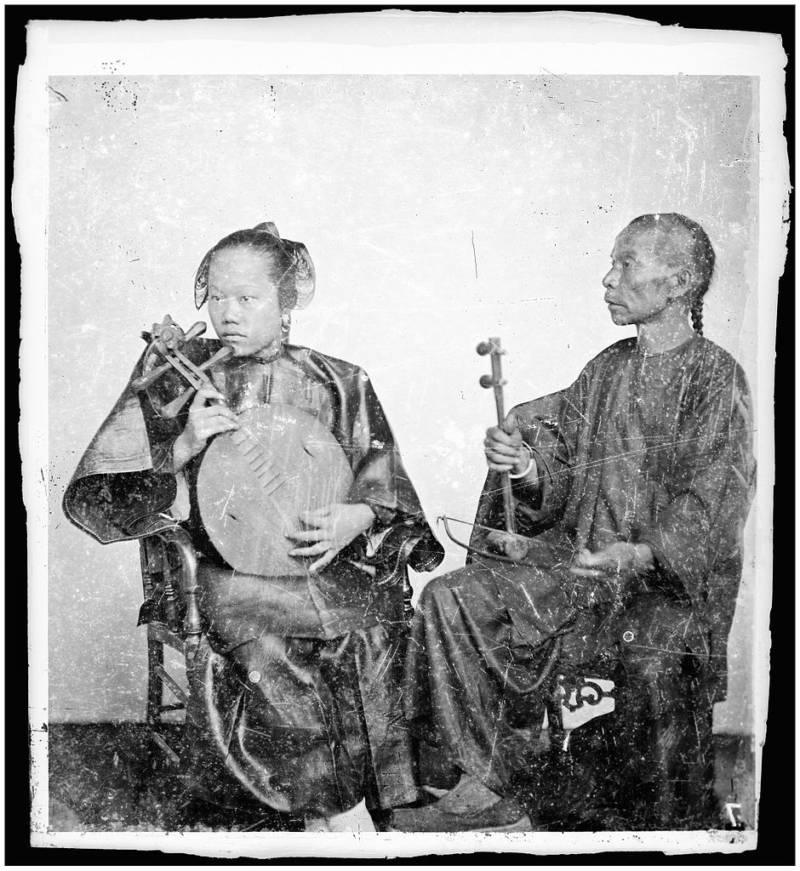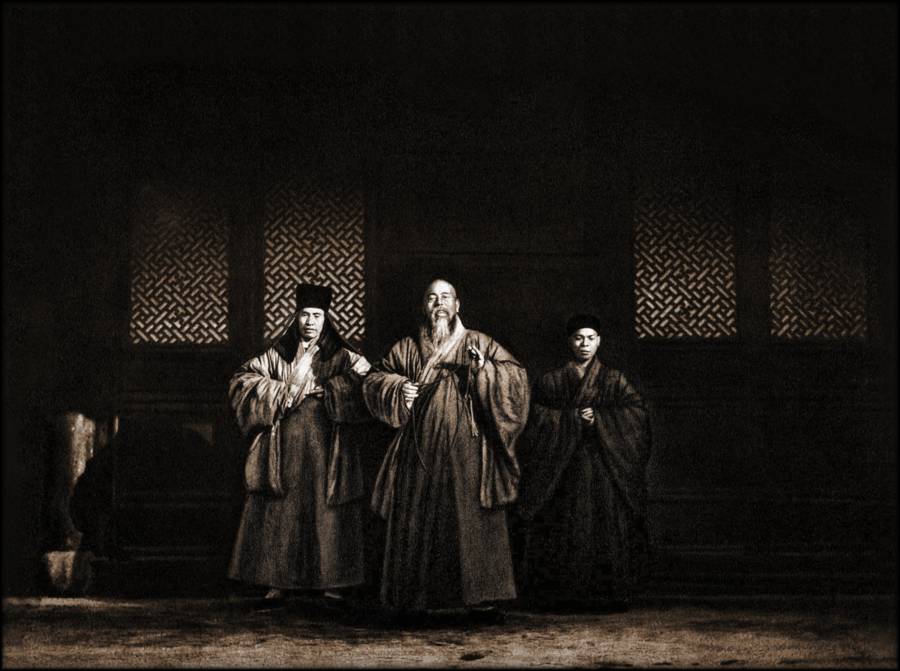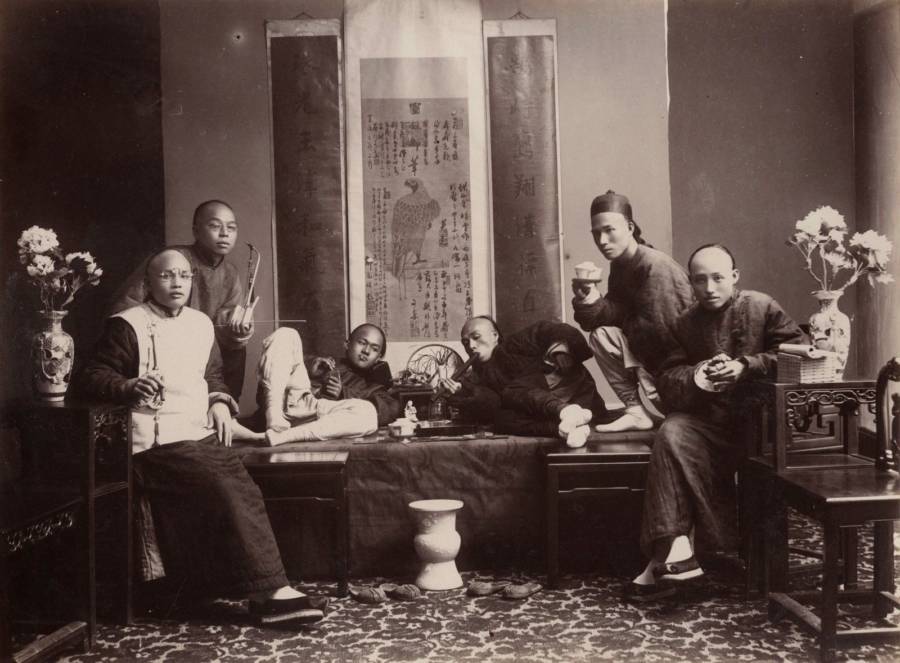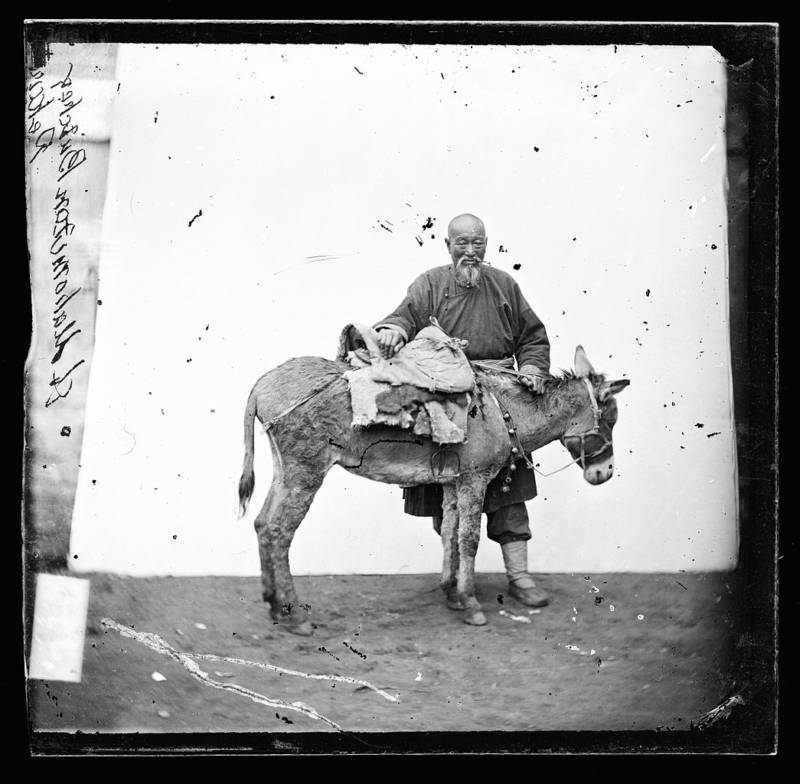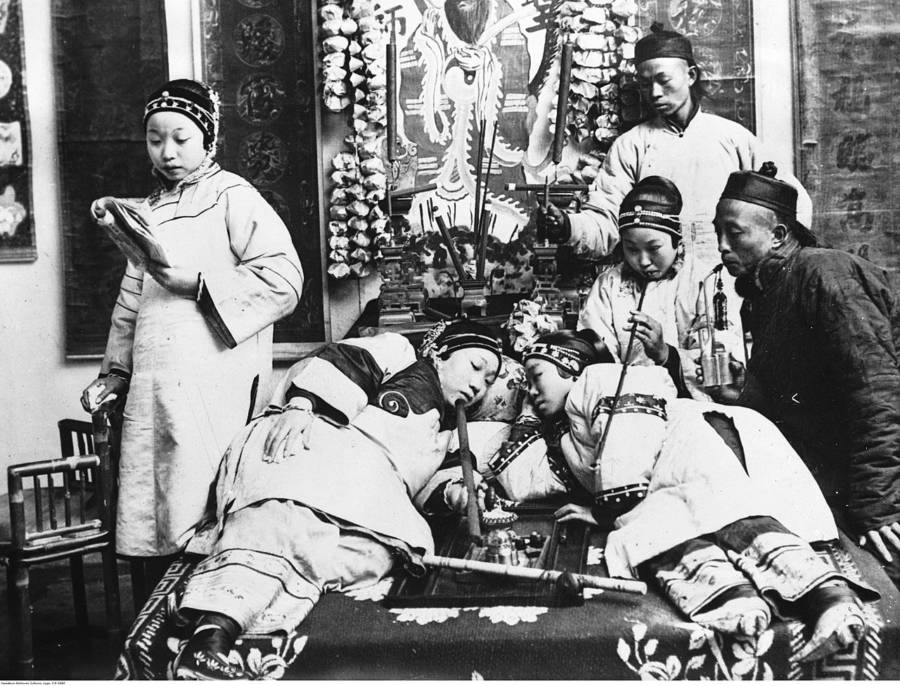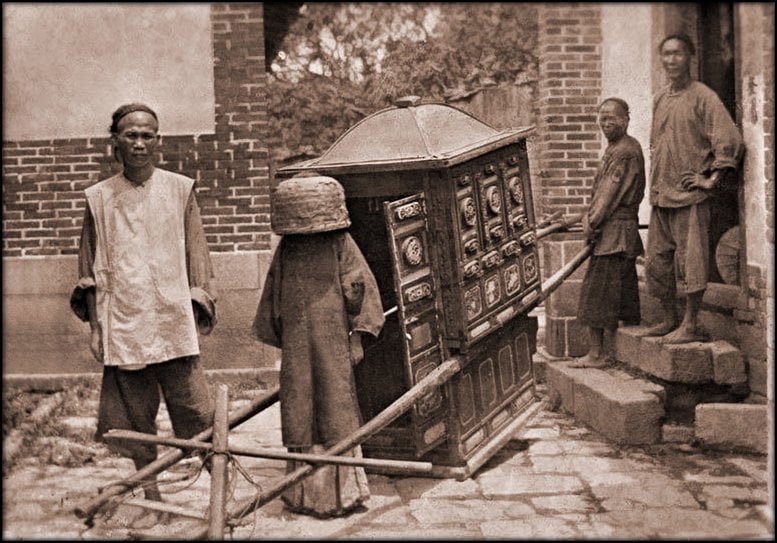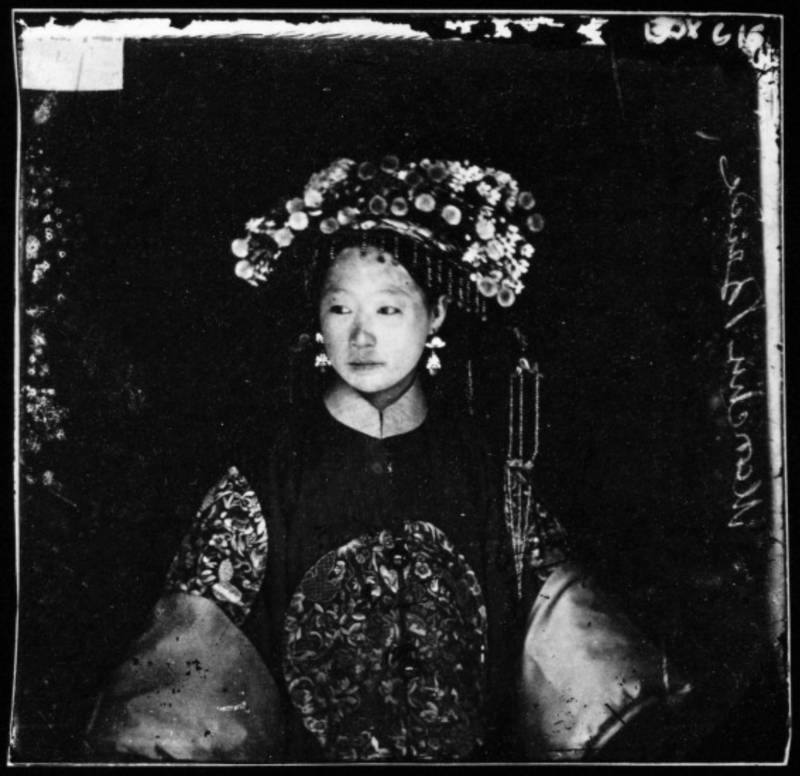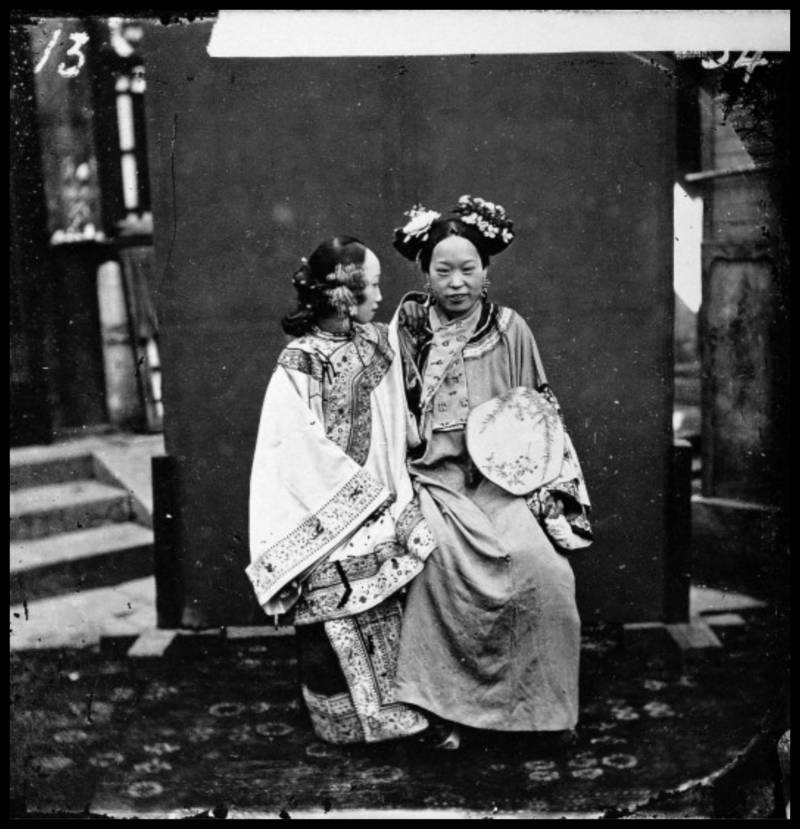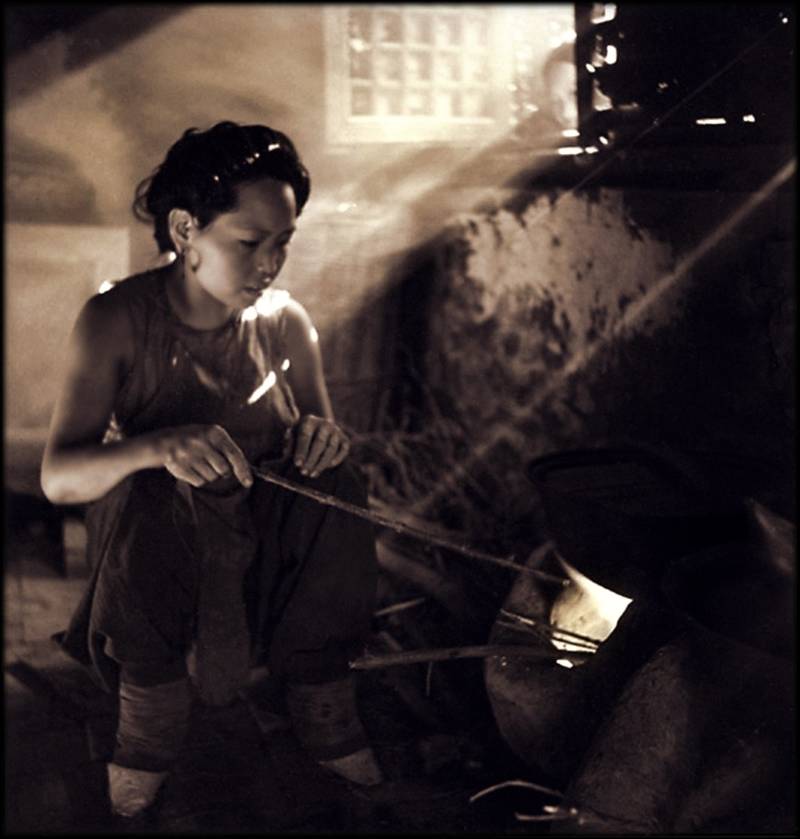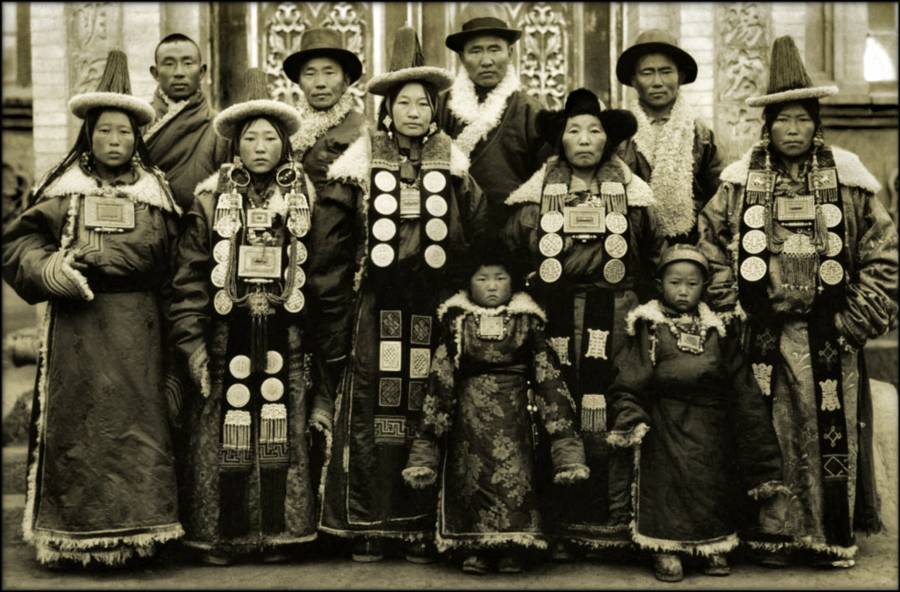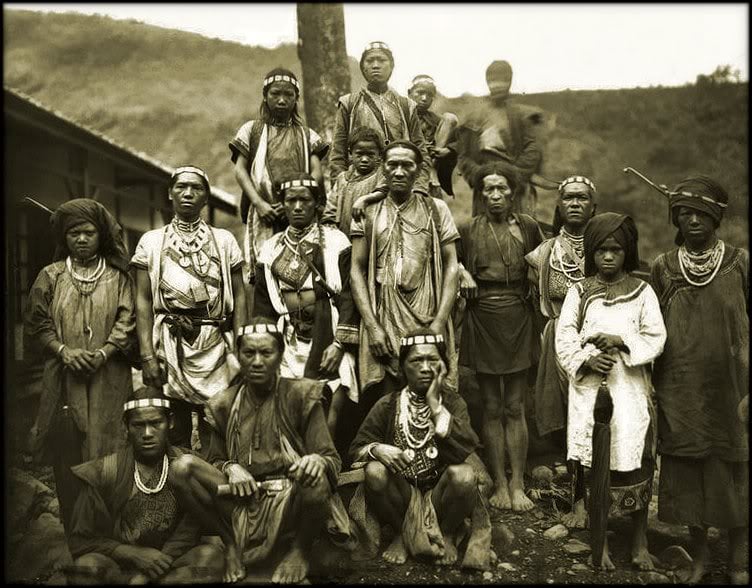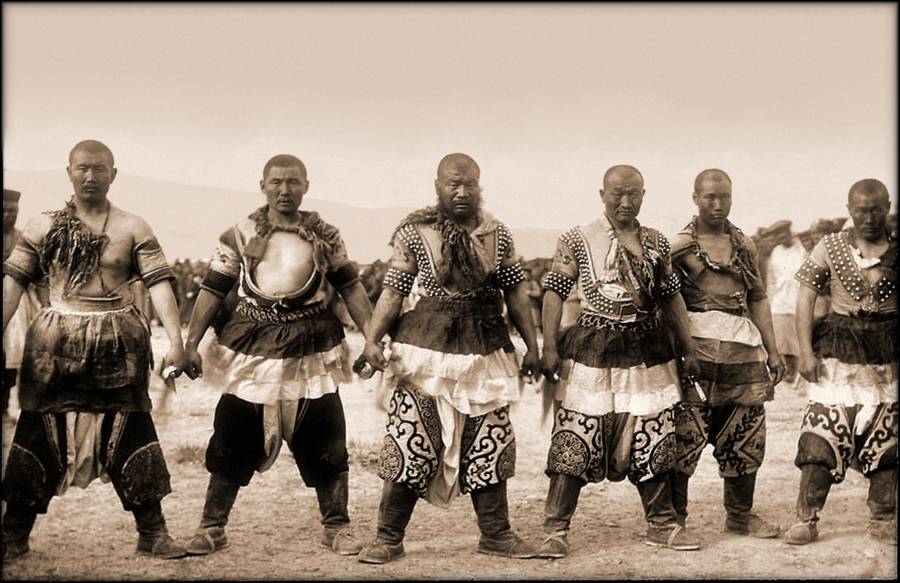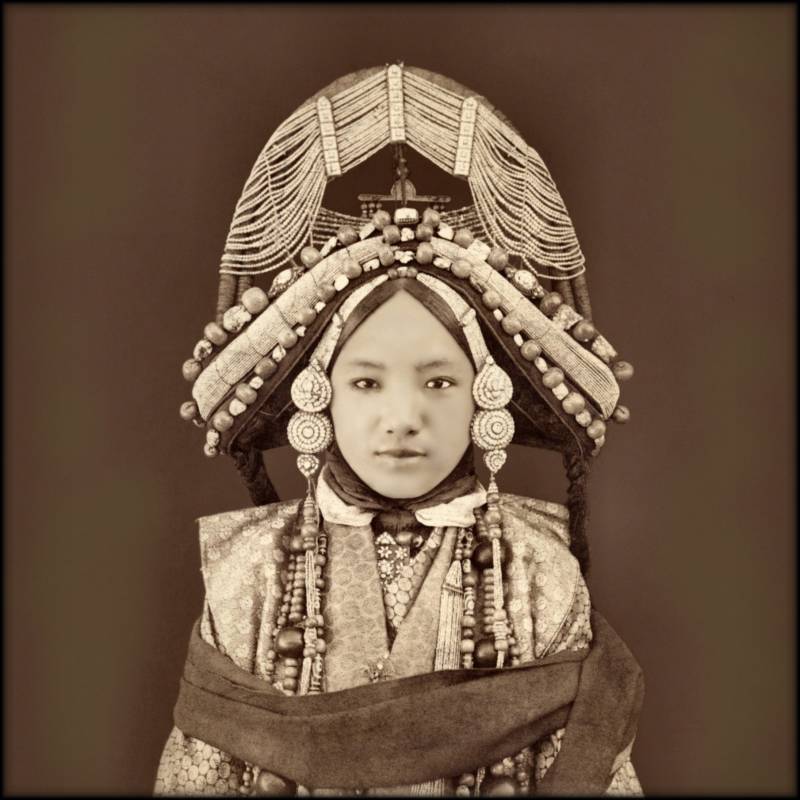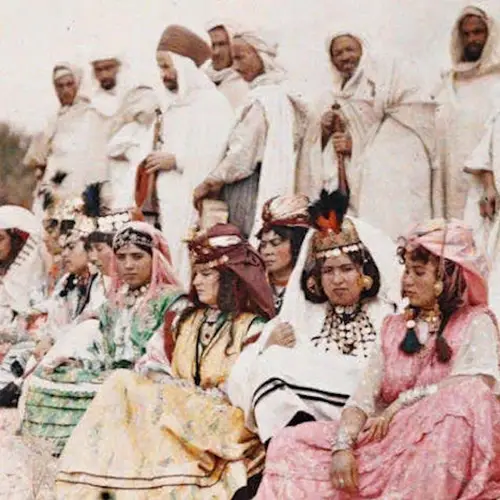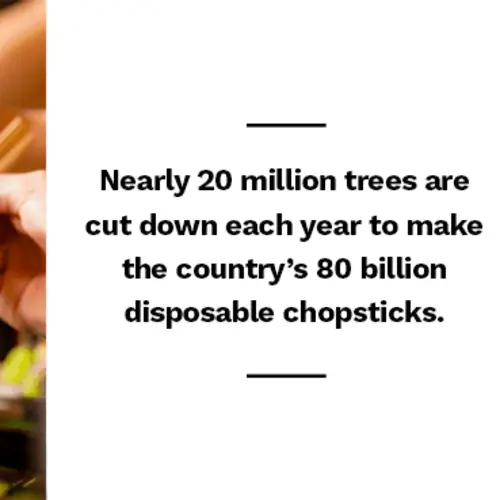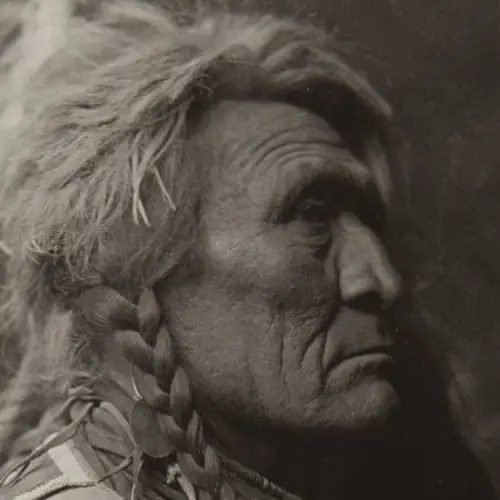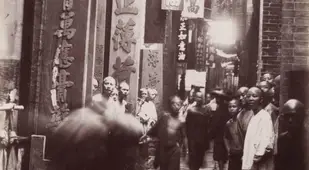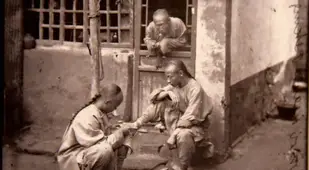1 of 45
Boys peek their heads out on a commercial street.
Guangzhou, Guangdong. 1880.Wikimedia Commons
2 of 45
A traditional pagoda, today known as the Jinshan Temple, sits on an island in the River Min.
Hongtang. Circa 1871.Wikimedia Commons
3 of 45
A doctor checks a patient's foot. Under the rule of the Qing dynasty, every Han Chinese man was required to wear his hair in a braid.
Beijing. 1869.Wikimedia Commons
4 of 45
Young girls practice the Beijing Opera at a theater school in Beijing. Their feet have been bound.
Beijing. 1934.Wikimedia Commons
5 of 45
Three young girls with bound feet. In imperial China, young girls would have their feet bound, crushing them into a tiny, mutilated shape they called the "lotus foot."
The Communist Party viewed foot binding as a symbol of China's "backwardness" that needed to be eliminated.
Liao Chow, Shanxsi. 1920s.Flickr/Ralph Repo
6 of 45
Boys at a mission school climb on each other's shoulders to form a dragon.
Beijing. 1902.Flickr/Ralph Repo
7 of 45
Men, with their hair in Qing braids, eating a meal.
Hong Kong. 1880.Wikimedia Commons
8 of 45
Peasant men carry bricks of tea on their back. The bricks of tea on their backs weigh more than 300 pounds. These men would often have to make deliveries by walking 112 miles on foot, with all of that weight on their backs,
Sichuan. 1908.Flickr/Ralph Repo
9 of 45
A Mandarin man poses with his son.
Location unspecified. 1869.Wikimedia Commons
10 of 45
Children in a schoolyard practice dancing.
Zhengjiang. 1905.Wikimedia Commons
11 of 45
A Beijing opera troop.
Location unspecified. 1919.Flickr/Ralph Repo
12 of 45
An elderly woman, wearing a traditional hairstyle poses in profile.
Location unspecified. 1869.Wikimedia Commons
13 of 45
A crowd gathers to watch a Beijing opera. During the Cultural Revolution, these would be replaced with "Revolutionary Operas," which were required to show the heroism of the People's Republic.
Qingdao. 1908.Wikimedia Commons
14 of 45
Two wealthy merchants eat and enjoy the company of girls paid to sing. These men, as part of the bourgeois, would be major targets of the new regime after the Communist Revolution.
Beijing. 1901.Flickr/Ralph Repo
15 of 45
Two singing girls pose for the camera. The instrument that the girl on the left is holding is called an erhu.
Hong Kong. 1901.Flickr/Ralph Repo
16 of 45
Men stand near the cannons of their local arsenal.
Nanjing. 1872.Wikimedia Commons
17 of 45
Men eating noodles purchased from a street vendor.
Guangzhou. 1919.Flickr/Ralph Repo
18 of 45
Three merchants in traditional dress reflecting class hierarchies, with the two older men (seated) wearing furs or more elaborate robes and the younger man (standing) wearing plainer clothes.
Kwangtung. 1869.Wikimedia Commons
19 of 45
A man rides a pony before the city gates.
Shaanxi. 1909.Wikimedia Commons
20 of 45
A woman poses with her maid (right) near a bronze incense burner.
Beijing. 1869.Wikimedia Commons
21 of 45
Chinese men pose with camels. Before paved roads and trains filled the veins of China, long distance travel would often be done on the backs on camels.
Beijing. 1901.Flickr/Ralph Repo
22 of 45
A boatwoman.
Kwangtung. 1869.Wikimedia Commons
23 of 45
A woman poses with her child.
Beijing. 1869.Wikimedia Commons
24 of 45
A man, wearing traditional robes, poses near a window.
Location unspecified. 1869.Wikimedia Commons
25 of 45
A wealthy woman rides on a white pony, led by a young boy in peasant's clothes.
Qingdao. 1900.Wikimedia Commons
26 of 45
A girl wears her hair in a traditional coiffure.
Beijing. 1869.Flickr/Ralph Repo
27 of 45
The ladies of the palace, dressed in the imperial clothes of the Qing dynasty. Their faces have been painted white.
Beijing. Circa 1910-1925.Flickr/Ralph Repo
28 of 45
A servant working for a wealthy family. Her feet have been bound.
Location unspecified. 1874.Wikimedia Commons
29 of 45
A girl sits while holding a fan.
Beijing. Circa 1861-1864.Flickr/Ralph Repo
30 of 45
Two musicians pose with their instruments.
Kwangtung. 1869.Wikimedia Commons
31 of 45
This photo is labeled "The Abbot of the Monastery." The subject is likely a Taoist priest.
Religion was suppressed during the Cultural Revolution under Marxist ideals. Taoists had to practice their religion in secret.
Chekiang. 1906.Flickr/Ralph Repo
32 of 45
Men smoking opium. During the Kuomintang party's rule in the early 1900s, opium was trafficked to fund the party.
The Communist Party, however, took a much harder line with opium and classified drug traffickers as the "enemies of the people." By 1951, the Communist Party claimed that opium abuse had been "wiped out."
Location unspecified. 1880.Wikimedia Commons
33 of 45
An elderly man poses with his mule.
Beijing. 1869.Wikimedia Commons
34 of 45
Before the Communist Party came into power, opium abuse was officially illegal. But in practice, it was fairly common. These smokers are hiding out in an illegal den.
Beijing. 1932.Wikimedia Commons
35 of 45
Chinese policemen punish a criminal by lashing him with a big paddle, a common punishment in old China. During the Communist era, this punishment would be shown in period dramas as an example of Qing cruelty.
Location unspecified. 1900.Flickr/Ralph Repo
36 of 45
A bride on her way to her wedding. Normally, a bride would cover her face with a red veil. It's not entirely clear why this woman is using a basket.
Fuzhou, Fujian. Circa 1911-1913.Flickr/Ralph Repo
37 of 45
A bride with her face unveiled.
Beijing. 1867.Flickr/Ralph Repo
38 of 45
A woman puts on her wedding dress and poses with her daughter on her lap.
Beijing. 1871.Flickr/Ralph Repo
39 of 45
A woman with bound feet at work, tending to a stove.
Hebei. 1936.Flickr/Ralph Repo
40 of 45
A woman checks out the market. Her child is sleeping, strapped to her back.
Hong Kong. 1946.Flickr/Ralph Repo
41 of 45
A family from a minority group in Lanzhou. China is an incredibly diverse country, containing some 55 unique ethnicities, each one with its own culture.
During the Cultural Revolution, ethnic minorities were pressured to give up their special statuses and cultures and embrace the new world of the revolution -- usually by force.
Lanzhou. 1944.Flickr/Ralph Repo
42 of 45
Taiwanese aborigines from the Bunun tribe. When the Communist Party came into power in 1945, the nationalist Kuomintang fled to Taiwan. There, they installed a "one language, one culture" policy that eroded the Bunun way of life.
Taiwan. 1900.Flickr/Ralph Repo
43 of 45
Mongolian strongmen performing in the August Games, dressed in traditional clothes.
During the Cultural Revolution, Inner Mongolia was plagued by revolutionaries trying to hunt down a separatist party. By the end, 22,900 people were beaten to death.
Hebei. 1909.Flickr/Ralph Repo
44 of 45
A Tibetan princess.
The Tibetan uprising was a direct response to the effects of the Cultural Revolution and the Communist Party's redistribution of their land.
Tibet. 1879.Flickr/Ralph Repo
45 of 45
Like this gallery?
Share it:
